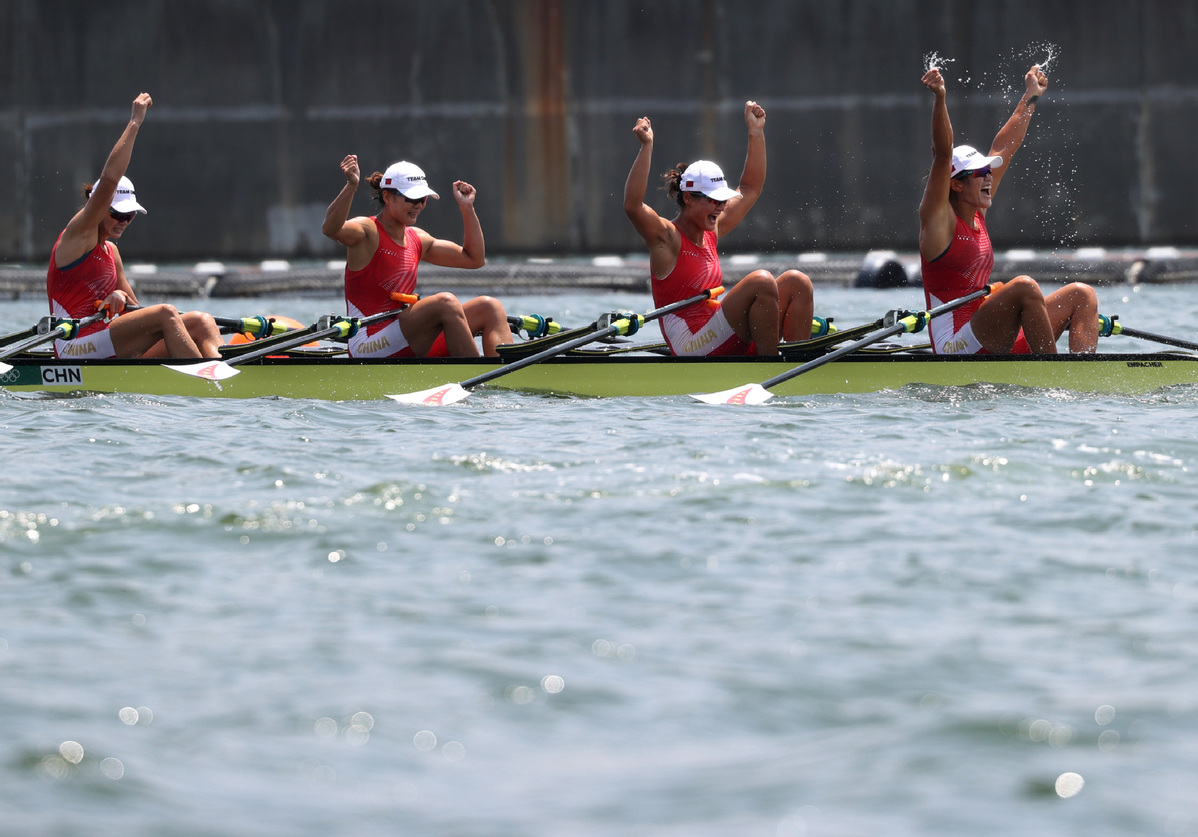Appliance of science boosts China's rowing development
 0 Comment(s)
0 Comment(s) Print
Print E-mail China Daily, September 22, 2021
E-mail China Daily, September 22, 2021

China's Olympic women's quadruple sculls champions eased to victory at the National Games over the weekend. But the quartet were equally buoyed by the "great improvements" made by other teams at the rowing competition in Yangling, Shaanxi province.
"Technology is contributing a lot to the development of rowing in China," said Luo Chen, a Chinese Rowing Association official.
According to Luo, a biomechanical system installed on training boats can monitor data such as each athlete's stroke frequency and strength, as well as the angle and depth of their oars in the water.
"If the strength on the left side is weaker than the right, athletes can make instant adjustments to ensure the boat always moves perfectly straight," Luo said.
Coaches also analyze data and compare it with the stats of the world's best rowers before devising training plans accordingly.
"All athletes on the boat will move toward one standard, and the result is that they are faster in achieving perfect cooperation," said Luo.
This is part of the reason why Olympic champions Chen Yunxia, Zhang Ling, Lyu Yang and Cui Xiaotong were able to synchronize so well on their way to quadruple sculls gold in Tokyo.
State-of-the-art tech also plays a key role in optimizing talent selection and cultivation.
Su Hui was selected as a rower when he was 13 years old, with the only reason being that he was "tall with long legs".
These days, physiological and biochemical indexes, such as maximum oxygen uptake, are collected before selection decisions are made.
"Apart from height and muscles, these indexes are quite important in judging whether a person can be an Olympic champion or not," Su said. "It's really accurate."
Su says the scientific training methods have debunked previously held beliefs that more training equals better results and more medals.
Nowadays, injury and burnout are avoided by observing and dissecting athletes' data at least once a week.
"We do this and adjust their intensity of training accordingly so as to be more efficient and prevent athletes from getting injured," Su explained.
During the gaps between regattas, athletes train on rowing machines. "Our machines have been upgraded, so this helps us a lot in improving our core strength, which is the basis for being a good rower," said Ren Jiaqi, a member of the Guangdong team.
To increase the pace of Chinese rowers, the General Administration of Sport of China has cooperated with universities to develop a number of high-tech products, such as anti-drag coating for boats to reduce resistance, and smart plates that accurately display the calories in food to help athletes eat more healthily.
This is the first time Olympic teams have competed against provincial squads at the National Games, and the experiment has been widely welcomed.
"This is a great chance for us to learn more from Olympians," said Liu Hang, a coach from Henan's team. "Apart from their honorable spirit and advanced training methods, we also found they utilize technology to enrich their training, and we will learn from this."






Go to Forum >>0 Comment(s)